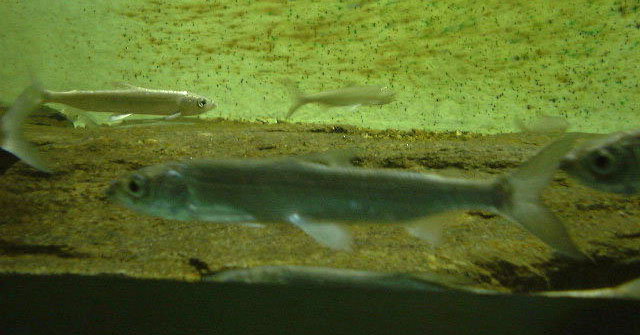| Salmonidae (Salmonids), subfamily: Coregoninae |
| 48 cm TL (male/unsexed); max.weight: 1,000.0 g; max. reported age: 10 years |
|
benthopelagic; freshwater; brackish; marine; depth range - 30 m, anadromous |
| Europe: Baltic basin, lakes of upper Volga drainage (Seliger, Vseluga, Perejaslavskoe), some lakes of White sea basin and North Sea basin east of Elbe drainage. Anadromous in Gulf of Finland and marine in northernmost freshened part of Gulf of Bothnia; north to about 69° N in Lake Inari, northern Finland; lower Rhine (now extirpated). Frequently stocked in lakes and reservoirs in Germany and Poland. |
|
Dorsal spines (total): 0-0; Dorsal soft rays (total): 11-13; Anal spines: 0-0; Anal soft rays: 13-17 |
| Lacustrine and marine in open water. At sea, forages close to coast (Ref. 59043). Forms pelagic schools in deeper lakes (Ref. 4779). Spawns along shores, at 3-10 m depth, rarely to 22 m depth or just below surface. Spawns deeper in clear lakes and closer to surface in lakes with humic waters (Ref. 59043). Spawns on shallow sand or gravel substrate. Anadromous in the Baltic. Feeds on planktonic crustaceans (Ref. 4779). |
|
Least Concern (LC); Date assessed: 05 March 2010 Ref. (130435)
|
| harmless |
Source and more info: www.fishbase.org. For personal, classroom, and other internal use only. Not for publication.

